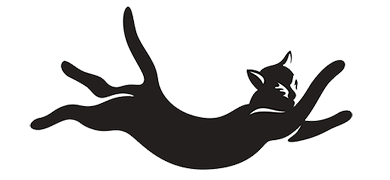Critical Alignment Therapy & Yoga
Institute, Moscow
Institute, Moscow
About Critical Alignment
Therapy and Yoga
Therapy and Yoga
What method is based on and what is its principle of operation
Critical Alignment Therapy and Yoga
The primary goal of Critical Alignment Therapy and Yoga (CAT/Y) is to mobilize the spinal column, restoring crucial mobility and balance. When the spine is mobile, it interacts with gravity, which means that we can release tension even during activity. Tension does not even build up in the arms, shoulders and legs when they are properly connected with the spine.
There are many benefits coming from relaxation. Relaxation gives us access to our primary strength system: the proper alignment of the spinal column. When the spinal vertebrae are in alignment, the deeper muscle layers (called postural muscles) are activated. These small muscles connect vertebrae and keep them mobile. They are the strongest muscles in our body and they never get tired.
On the contrary, they supply the body with energy. Without this alignment, we use the superficial muscles (called movement muscles), which are designed for short bursts of activity, to hold our posture. Unlike postural muscles, movement muscles fatigue, and the constant load causes them to become strained, limiting our freedom of movement.
The primary goal of Critical Alignment Therapy and Yoga (CAT/Y) is to mobilize the spinal column, restoring crucial mobility and balance. When the spine is mobile, it interacts with gravity, which means that we can release tension even during activity. Tension does not even build up in the arms, shoulders and legs when they are properly connected with the spine.
There are many benefits coming from relaxation. Relaxation gives us access to our primary strength system: the proper alignment of the spinal column. When the spinal vertebrae are in alignment, the deeper muscle layers (called postural muscles) are activated. These small muscles connect vertebrae and keep them mobile. They are the strongest muscles in our body and they never get tired.
On the contrary, they supply the body with energy. Without this alignment, we use the superficial muscles (called movement muscles), which are designed for short bursts of activity, to hold our posture. Unlike postural muscles, movement muscles fatigue, and the constant load causes them to become strained, limiting our freedom of movement.
Critical Alignment Therapy
Science took us to the moon and, in the near future, it may even take us to Mars. But it seems almost impossible to shift the vertebrae a few millimeters into their stable position and make the spine pain-free. The reason, according to Critical Alignment founder Gert van Leeuwen, is that our overly analytical minds damage the relationship between our physical body and our psyche. Critical Alignment brings the physical and the psychological together with remarkable results.
Nearly all of us experience an injury at some point during our lives. It might be a sudden injury, for example, from an accident. Or the injury might develop more slowly and subtly, such as the 'repetitive strain injuries' (RSI) that are common in workplace environments. We may also experience a combination of the two: slower onset injuries that seem to result from an acute injury, or acute injuries that are actually connected to a slow build-up of tension in our bodies. In addition to our physical bodies, we can also experience psychological stress and strain that can lead to a double effect: emotional instability may lead to anxiety, burnout and other mental health concerns. Stress causes high muscle tension, forced breathing, high blood pressure and much more.
Science took us to the moon and, in the near future, it may even take us to Mars. But it seems almost impossible to shift the vertebrae a few millimeters into their stable position and make the spine pain-free. The reason, according to Critical Alignment founder Gert van Leeuwen, is that our overly analytical minds damage the relationship between our physical body and our psyche. Critical Alignment brings the physical and the psychological together with remarkable results.
Nearly all of us experience an injury at some point during our lives. It might be a sudden injury, for example, from an accident. Or the injury might develop more slowly and subtly, such as the 'repetitive strain injuries' (RSI) that are common in workplace environments. We may also experience a combination of the two: slower onset injuries that seem to result from an acute injury, or acute injuries that are actually connected to a slow build-up of tension in our bodies. In addition to our physical bodies, we can also experience psychological stress and strain that can lead to a double effect: emotional instability may lead to anxiety, burnout and other mental health concerns. Stress causes high muscle tension, forced breathing, high blood pressure and much more.

Gert van Leeuwen
Born in 1954 in a small village connected to Amsterdam by a small bridge, Gert van Leeuwen grew up in the peace of the countryside and the speed of a city.
Around the age of 16, Gert became interested in Indian philosophy and yoga—not so strange, given it was a time that 'Western' culture was starting to meet the 'East'. Maybe this curiosity and enthusiasm were inspired by the Beatles, who were initiated in transcendental meditation by the Maharishi. The works of J. Krishnamurti, especially, made a big impression on Gert.
During that same period, Gert worked at a retirement home reception desk. Every day at work, he saw the residents passing by, shuffling and cramped in their bodies. Reading about yoga, he thought to himself, 'This could be different'. He was inspired! From then on, everything in his career developed without any planning.
At the age of 18, Gert started to practice yoga and, when his first teacher asked him if he wanted to become a yoga teacher, he said 'yes' without any thought. His teacher created a teacher training program especially for him. Gert taught his first classes in 1976.
In the early 1980s, Gert met two brilliant teachers, N.E. Sjoman and H.V. Dattatreya. They were independent and not related to any yoga organisation. Those teachers, from the Mysore tradition, became a turning point in Gert's development.
Sjoman had studied with BKS Iyengar for five years, before he became known to the world. Gert started to practice 20 minutes of headstand and shoulderstand on a daily basis. He went to one beginner and one intermediate class every day. As time went on, he progressed to forward bends, backbends and balancing poses, and pranayama. The climax of the practice was 108 viparita chakrasanas! Sjoman also inspired Gert to study Sanskrit.
Gert became a well-known Iyengar teacher in the Netherlands; his practice and teaching were intense. But he felt inspired to go beyond the Iyengar system and its research, to provide a particular safety for his students and feel joy in his own practice. He felt that actions (in the practice of yoga and in life) led only by will power were leading to the suppression of subtle feelings in the body, like rest, space and joy, increasing tension instead of releasing it.
Gradually, step-by-step, Gert started to evolve what he had learned through the Iyengar method. Gert's practice was built on a strong anatomical and psychological foundation, connected to modern science, with the absence of hierarchy and fear. It took 20 years of research, practice and observation before he was able to present his newly developed style to the world, through the publication of his book, Critical Alignment Yoga, in 2012.
This new style of yoga (Critical Alignment Yoga, or CAY) and a new yoga therapy method (Critical Alignment Therapy, or CAT) are now widely accepted in many places throughout the world. Gert leads the Critical Alignment Yoga and Therapy school in Amsterdam, and he travels widely to train yoga teachers and therapists in his method.
His book is available in Dutch, English and Russian.
Born in 1954 in a small village connected to Amsterdam by a small bridge, Gert van Leeuwen grew up in the peace of the countryside and the speed of a city.
Around the age of 16, Gert became interested in Indian philosophy and yoga—not so strange, given it was a time that 'Western' culture was starting to meet the 'East'. Maybe this curiosity and enthusiasm were inspired by the Beatles, who were initiated in transcendental meditation by the Maharishi. The works of J. Krishnamurti, especially, made a big impression on Gert.
During that same period, Gert worked at a retirement home reception desk. Every day at work, he saw the residents passing by, shuffling and cramped in their bodies. Reading about yoga, he thought to himself, 'This could be different'. He was inspired! From then on, everything in his career developed without any planning.
At the age of 18, Gert started to practice yoga and, when his first teacher asked him if he wanted to become a yoga teacher, he said 'yes' without any thought. His teacher created a teacher training program especially for him. Gert taught his first classes in 1976.
In the early 1980s, Gert met two brilliant teachers, N.E. Sjoman and H.V. Dattatreya. They were independent and not related to any yoga organisation. Those teachers, from the Mysore tradition, became a turning point in Gert's development.
Sjoman had studied with BKS Iyengar for five years, before he became known to the world. Gert started to practice 20 minutes of headstand and shoulderstand on a daily basis. He went to one beginner and one intermediate class every day. As time went on, he progressed to forward bends, backbends and balancing poses, and pranayama. The climax of the practice was 108 viparita chakrasanas! Sjoman also inspired Gert to study Sanskrit.
Gert became a well-known Iyengar teacher in the Netherlands; his practice and teaching were intense. But he felt inspired to go beyond the Iyengar system and its research, to provide a particular safety for his students and feel joy in his own practice. He felt that actions (in the practice of yoga and in life) led only by will power were leading to the suppression of subtle feelings in the body, like rest, space and joy, increasing tension instead of releasing it.
Gradually, step-by-step, Gert started to evolve what he had learned through the Iyengar method. Gert's practice was built on a strong anatomical and psychological foundation, connected to modern science, with the absence of hierarchy and fear. It took 20 years of research, practice and observation before he was able to present his newly developed style to the world, through the publication of his book, Critical Alignment Yoga, in 2012.
This new style of yoga (Critical Alignment Yoga, or CAY) and a new yoga therapy method (Critical Alignment Therapy, or CAT) are now widely accepted in many places throughout the world. Gert leads the Critical Alignment Yoga and Therapy school in Amsterdam, and he travels widely to train yoga teachers and therapists in his method.
His book is available in Dutch, English and Russian.

